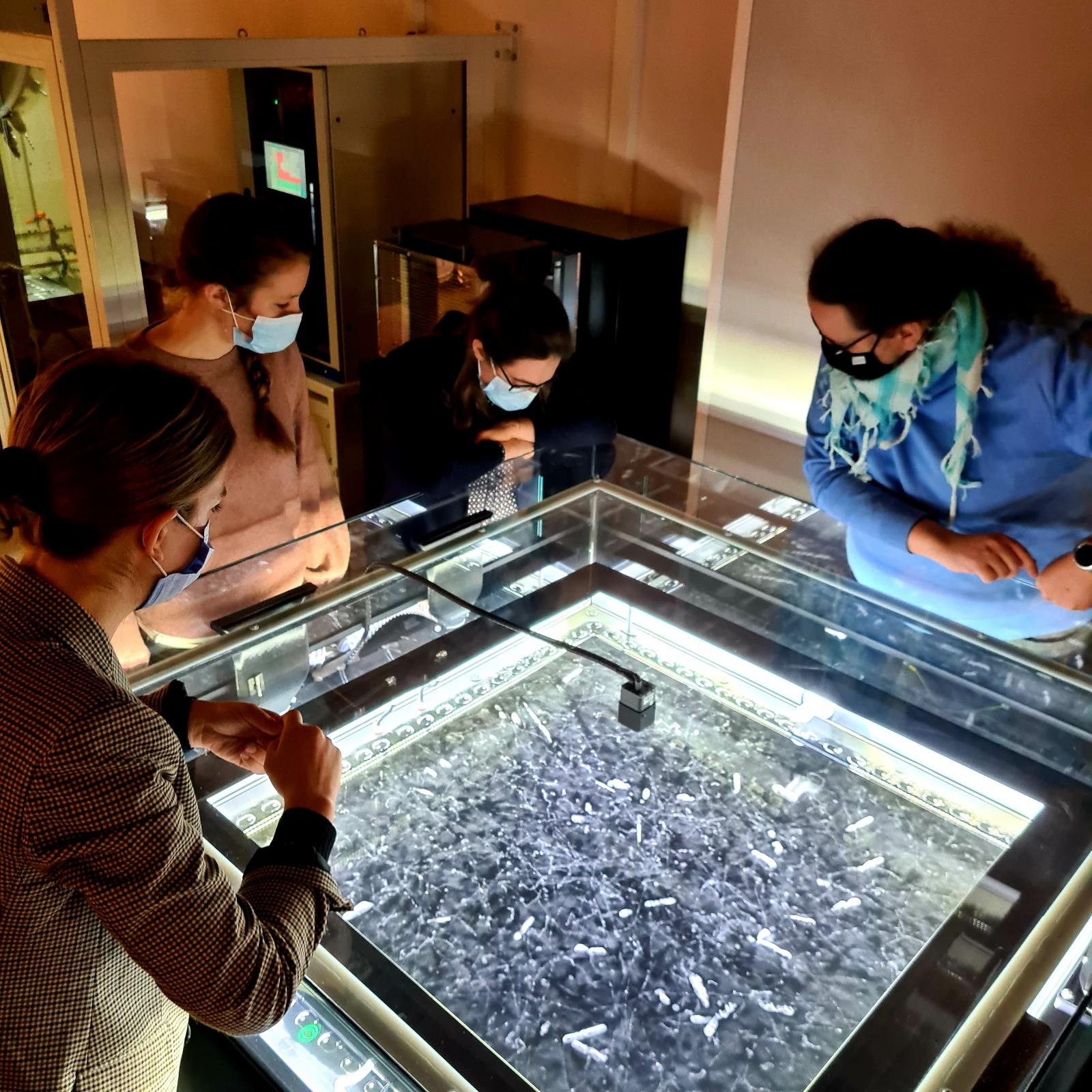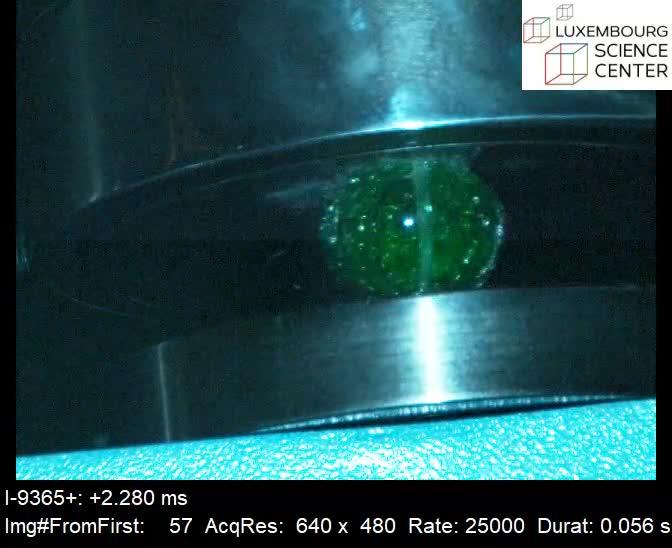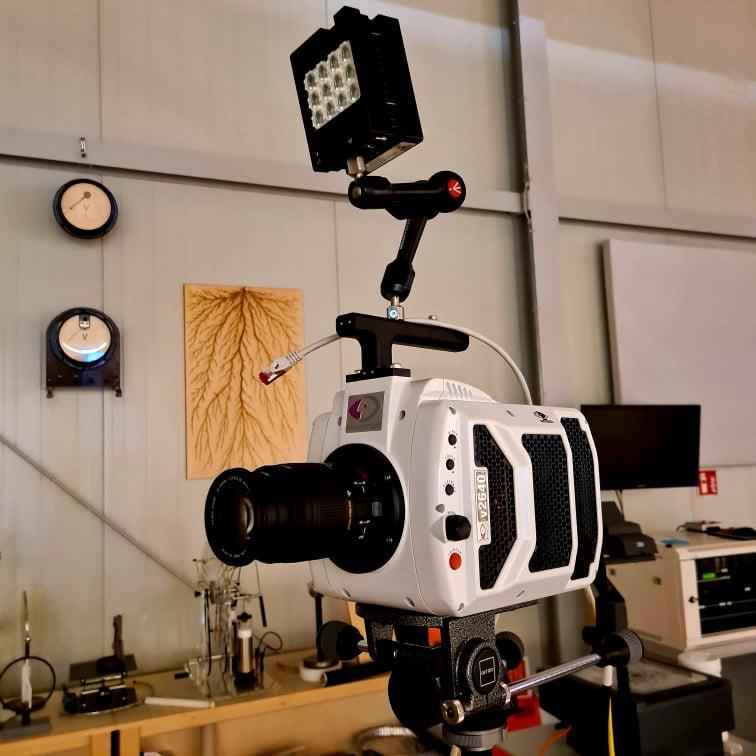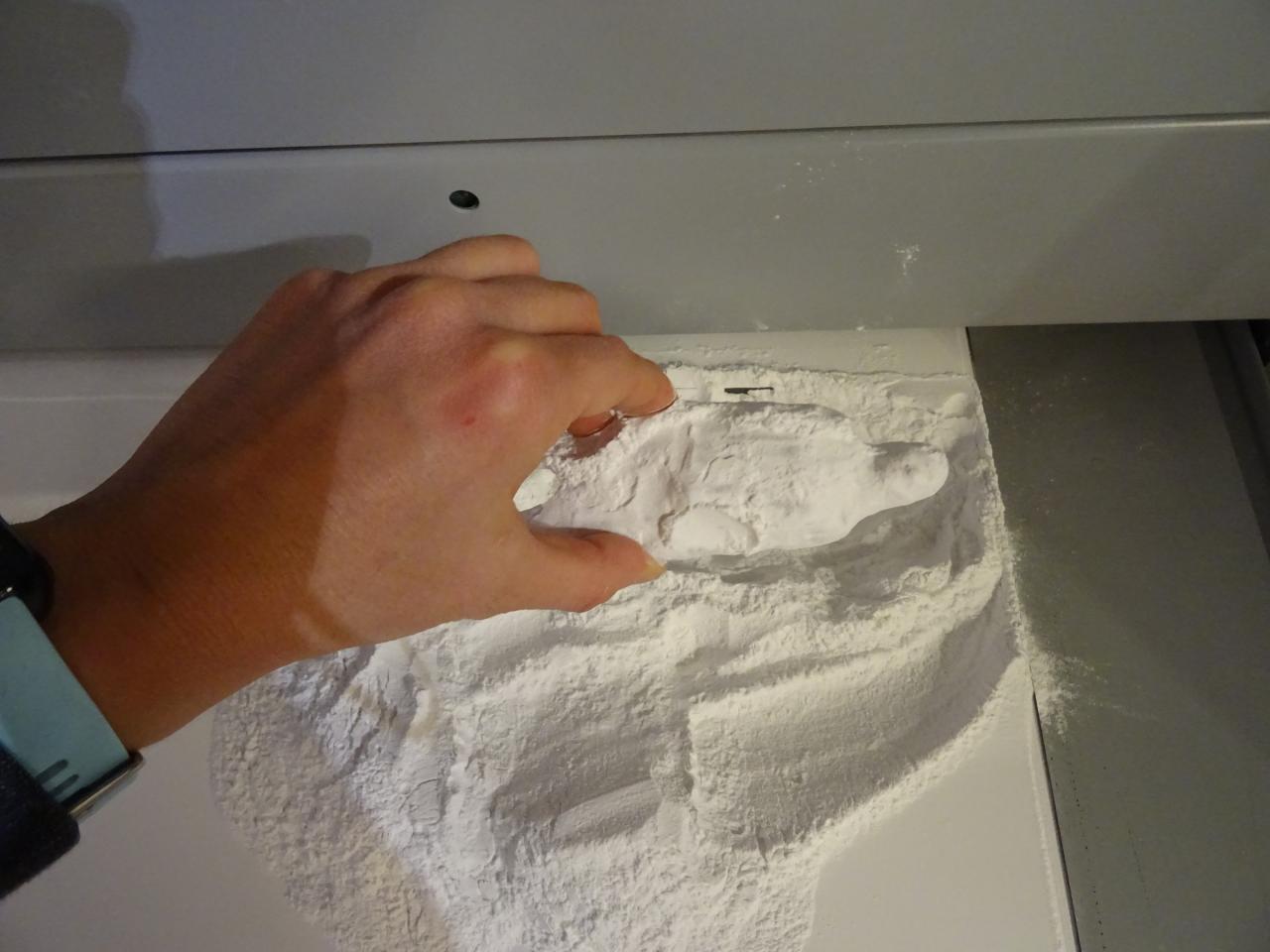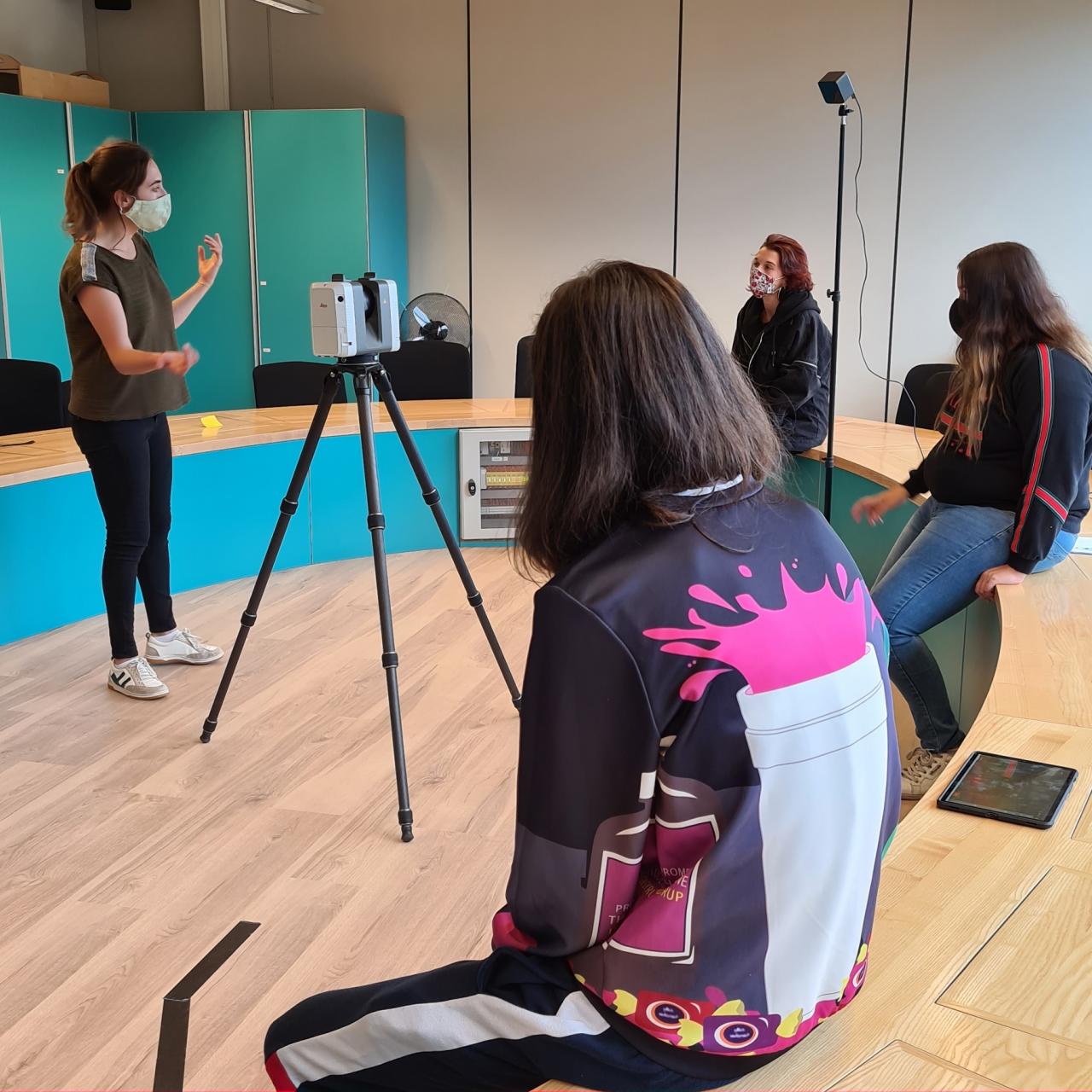GOAL OF THE PROJECT:
The FEDER project "Luxembourg Science Center" consists in co-financing exceptional scientific and technological equipment. The focus here is on the following points:
- Bringing science and research closer to the wider public;
- Developing synergies between Luxembourg companies, economic operators and research institutes by making the equipment available for specific projects. (If you are interested in a collaboration, please contact us.)
The following devices are financed by the FEDER project:
EXPERIMENTAL STATIONS:
– Ecosphere: The ecosphere is a hermetically sealed glass ball with a diameter of 1 m that contains a self-sufficient ecosystem (microorganisms, shrimp, algae). The ecosystem of the ecosphere can exist for up to 20 years in complete autonomy without any external contribution (except daylight). It is an excellent example of a circular economy and represents the fragility of the earth's ecosystem and the need to protect it. The ecosphere was developed by NASA researchers at the Jet Propulsion Laboratory. They were interested in how life can exist far from any contact with earth.
– Cloud and spark chamber: Both experiment stations make it possible to observe the trajectories of subatomic particles with the naked eye. In the cloud chamber these are made visible by small clouds, which are formed by condensation in an alcohol atmosphere. In the spark chamber, the paths are spectacularly visualized by small electrical sparks. Historically, cloud and spark chambers were among the first methods to make elementary particles visible. They enabled the discovery of several, at the time, as yet unknown elementary particles, which led to the award of several Nobel Prizes.
– Hologram: Holography is a special technique used to create spectacular 3D images on a 2D surface. Another current application of this technology is holographic memory with the help of which, compared to traditional data storage devices, high data densities can be stored.
RESEARCH INSTRUMENTS:
– Electron microscope: The scanning electron microscope (SEM) opens the view to the world of the "infinitely small". The compact device, which is easy to operate, allows you to take pictures of small objects with up to 100,000 times magnification in seconds (for comparison: a traditional optical microscope is limited to 1,500 times magnification). Both the surface relief and the chemical composition of every point on the surface can be examined.
– Highspeedcamera: The high-speed camera enables recordings of 100,000 images per second (conventional cameras shoot 24 images per second for comparison); and all in color! With the camera, ultra-fast, physical phenomena that surround us can be broken down into slow motion: from the bursting of a water-filled balloon to the flapping of an insect's wings.
– Observatory: In addition to the electron microscope, which gives us access to an infinitely small world, and the high-speed camera with which we dive into infinitely fast worlds, the celestial observatory should now allow us to look into the infinite expanse of space. The observatory allows observations by day and night including the exploration of the sun, planets, galaxies, asteroids, comets, astronomical nebulae, star clusters, the moon, double stars and other celestial bodies. The observatory is accompanied by a planetarium.
– (bio-)medical devices: A collection of different devices enables the human body to be examined and understood. Different techniques can be used to look inside the body and make bones, muscles, brain, nerve signals, blood vessels, etc. "visible":
- A magnetic resonance imaging (MRI) scanner;
- An ultrasound machine;
- An electroencephalogram (EEG).
– LIBS Laser: Similar to the spectrometer of the electron microscope, the LIBS "laser-induced breakdown spectroscopy" laser can be used to carry out qualitative and quantitative investigations of the chemical composition of surfaces. In contrast to the electron microscope, the size of the examined sample is not limited. In industry, LIBS lasers are used, among other things, for recycling. Different metals and alloys can be distinguished very quickly and partly automatically. Such lasers also play a major role in exploring space. The “Curiosity Rover” is for example equipped with a LIBS laser to examine samples of materials on Mars.
MANUFACTURING MACHINERY:
– 3D printer: 3D printing is considered to be a revolution on the same scale as Gutenberg's invention of paper printing 5 centuries ago and has changed the world of production significantly in recent years. Basically, with 3D printing, material is added layer by layer until a three-dimensional object is created. Belong to our fleet:
- A plastic filament printer;
- A plastic resin printer;
- A CMYK color powder printer;
- A metal printer.
– 3D scanner: The Science Center's 3D scanners include both hand-held and room scanners. With the hand scanners, small objects from a few centimeters to objects of several meters in size can be recorded. The room scanner records and documents its surroundings in 3D. Furthermore, the 3D scanners simplify working with the 3D printers. An object can be scanned and the scan can then be used as an aid to create a digital 3D object. On the other hand, scanning objects can serve as documentation and as a template for architectural plans. Areas of application are architecture and construction, fashion and design, archeology, medicine and others.
– Water jet cutter: Water jet cutters are used for the computer-controlled cutting of materials such as steel. A high-pressure water jet, to which sharp-edged cutting sand is added, generates high pressure (max. 6000 bar) on the surface of the workpiece at exit speeds of up to 1000 m/s.
